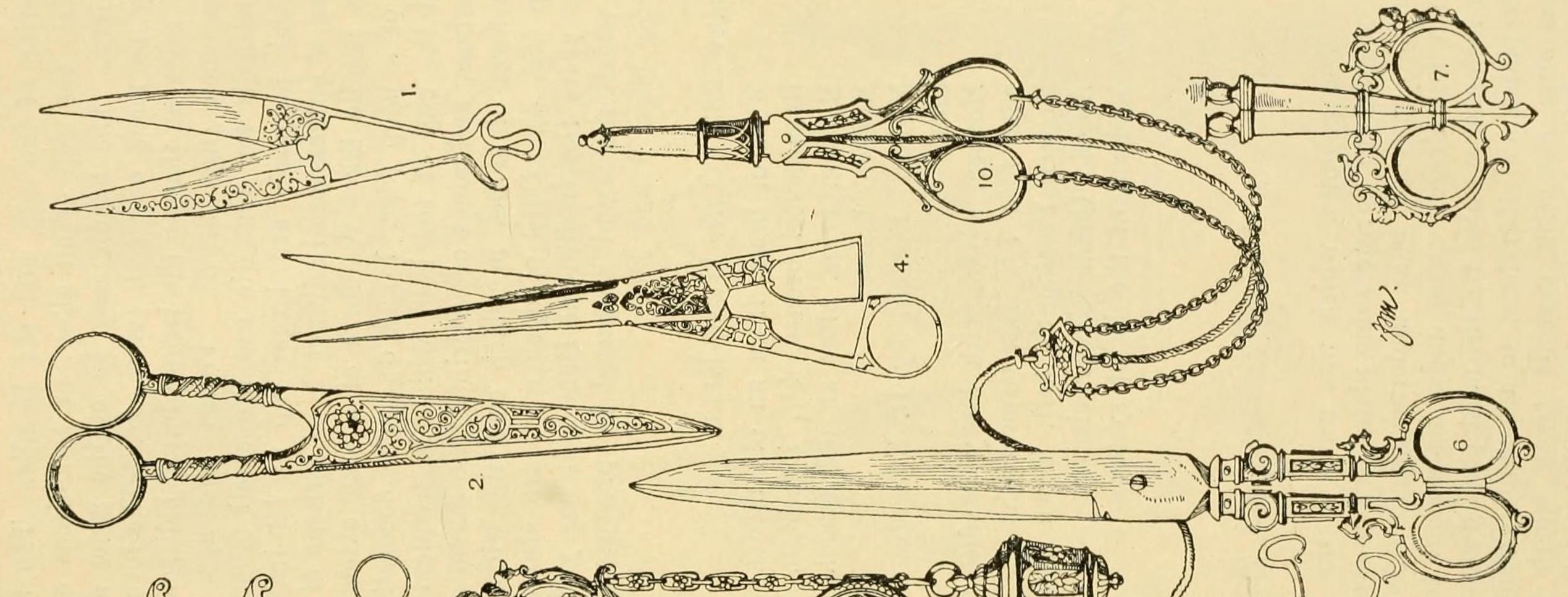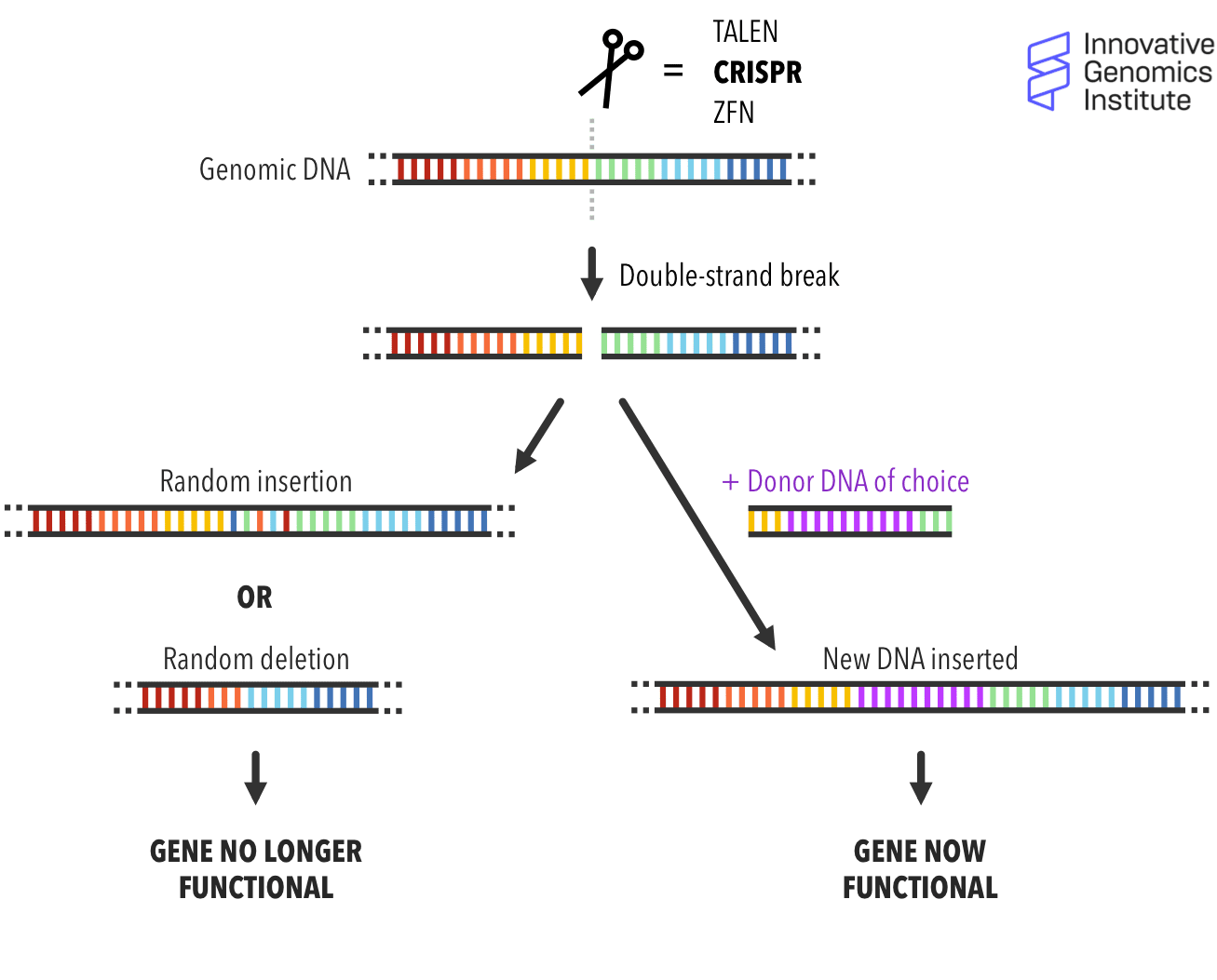
How Do Gene Editing Techniques Work?
We created this simple diagram to summarize the process of genome editing. Scientists use the Cas9 protein like a molecular scalpel to slice a DNA site in two. The cell will die if it does not repair the damage to its genome, so it has two main ways to fix the DNA break.

In the non-homologous end joining (NHEJ) pathway shown on the left side of the diagram, random bits of DNA are inserted or deleted at the cut site before the free DNA ends are reattached. When a gene’s sequence is disrupted in this way, it will no longer function, so NHEJ is a great way to stop the effects of a harmful gene.
Another pathway called homology-directed repair (HDR) is shown on the right side of the diagram. Researchers add a piece of DNA containing sequences that match the site of the break, and the cell uses it as a “patch” to repair the cut. In this manner, scientists can deliver new genes with useful functions or replace a mutation with a healthy sequence.